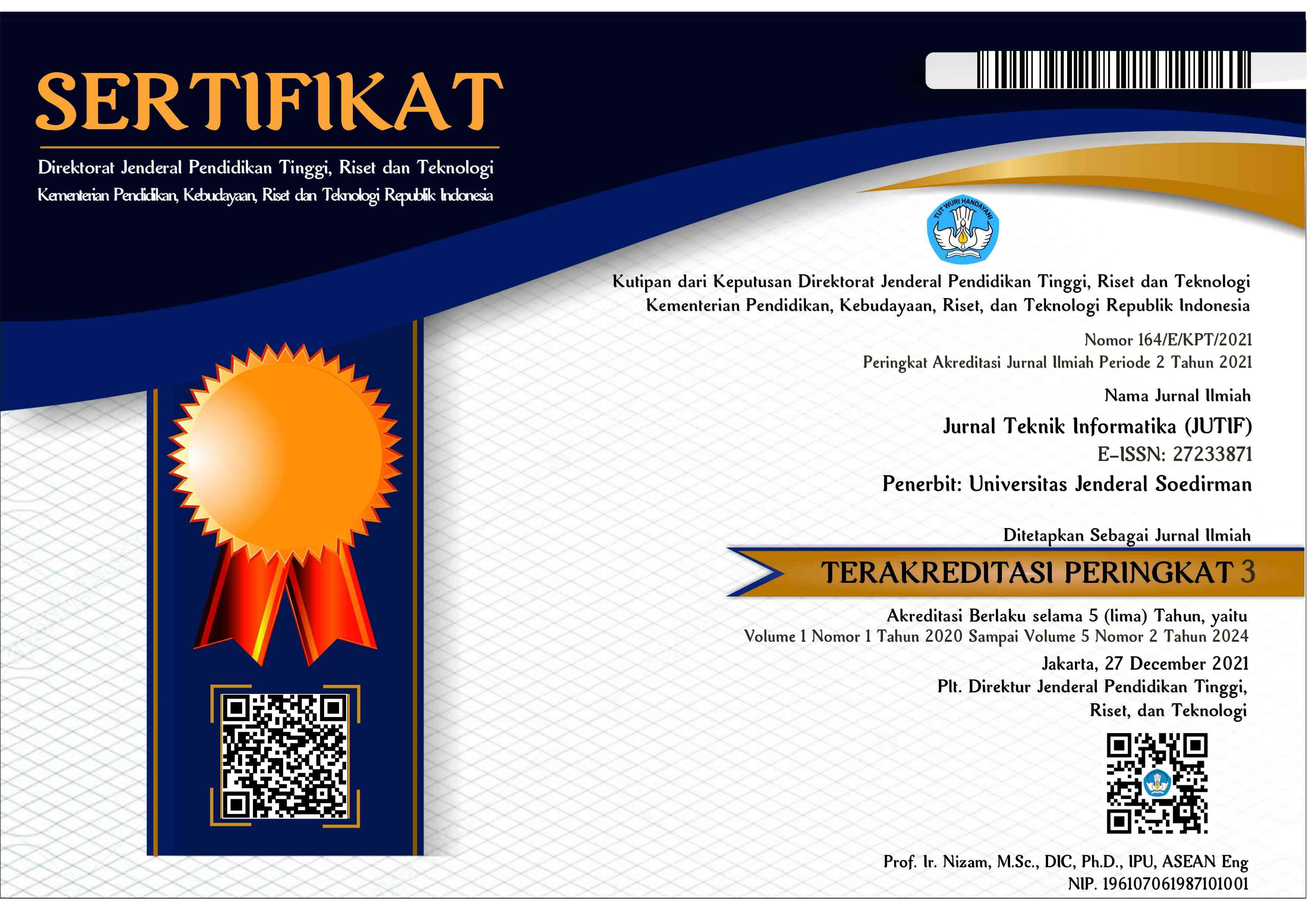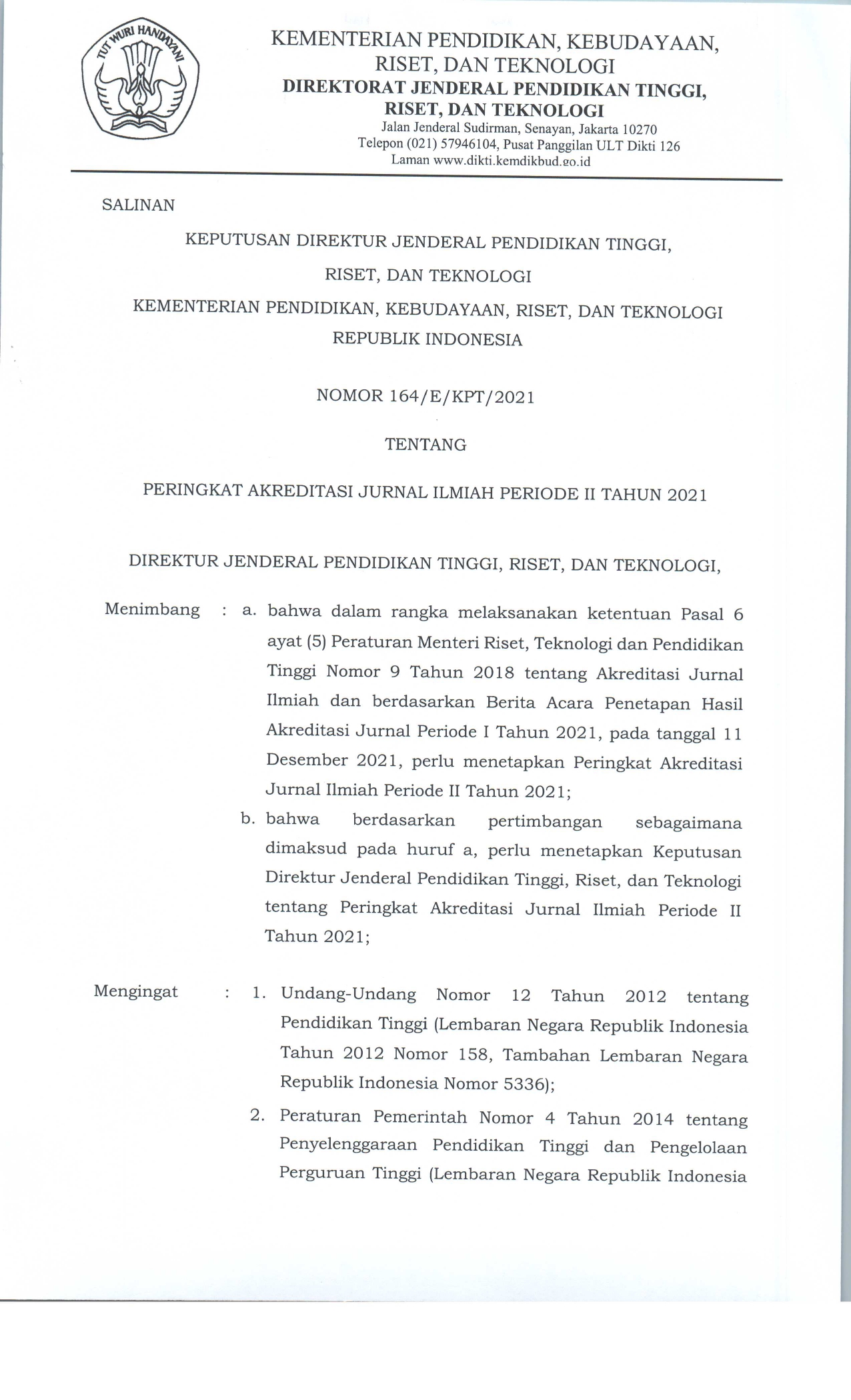ANALYSIS OF CONTINUANCE USE INTENTION OF TIKTOK AS EDUCATIONAL INFORMATION WITH EXPECTATION CONFIRMATION MODEL (ECM) AND INFORMATION SYSTEM SUCCES MODEL (ISSM)
Abstract
Social media is one of the main technologies currently used by billions of people around the world, especially TikTok. TikTok contains popular content such as comedy, dancing, and increasingly educational information. TikTok presents the #SerunyaBelajar program with 1.4 million posts. Despite the existence of interesting programs, problems were found such as inappropriate keywords about education, short video duration, inconsistent quality of information and distraction. So TikTok needs to focus on user satisfaction and retention by continuing to innovate. The purpose of this study is to measure satisfaction and intention to continue using TikTok as educational information. This study uses 2 models, namely the Expectation Confirmation Model with four variables (confirmation, perceived usefulness, satisfaction, and intention to continue) and the Information System Success Model with two variables (system quality and information quality). Respondents used totaled 96 TikTok users who accessed educational content and were processed using SEM-PLS. This study found that confirmation (T: 19.558) affects perceived usefulness. Thus, many users feel that TikTok provides useful features. In addition, satisfaction (T: 6.364) and continuance intention (T: 3.602) are influenced by perceived usefulness related to TikTok. And satisfaction (T: 3.809) influences TikTok users' continued intention to access educational content..
Downloads
References
D. Susilo, “Unlocking The Secret of E-Loyalty: A Study from Tiktok Users in China,” Int. J. Econ. Business, Entrep., vol. 3, no. 1, pp. 37–49, 2020, doi: 10.23960/ijebe.v3i1.73.
R. A. Astri, M. Jazman, and E. Saputra, “Cybersecurity Supply Chain Risk Management Using NIST SP 800-161r1,” vol. 3, no. 6, pp. 595–601, 2023, doi: 10.30865/klik.v3i6.799.
A. M. Ayulya, M. L. Hamzah, and T. Khairil, “Developments and Trends in Indonesian Tourism Technology Using Bibliometric Analysis,” no. x, pp. 1–12, 2024, doi: 10.22146/ijccs.xxxx.
G. Appel, L. Grewal, R. Hadi, and A. T. Stephen, “The future of social media in marketing,” J. Acad. Mark. Sci., vol. 48, no. 1, pp. 79–95, 2020, doi: 10.1007/s11747-019-00695-1.
M. Al-Khasawneh, A. A. A. Sharabati, S. Al-Haddad, R. Tbakhi, and H. Abusaimeh, “The adoption of TikTok application using TAM model,” Int. J. Data Netw. Sci., vol. 6, no. 4, pp. 1389–1402, 2022, doi: 10.5267/j.ijdns.2022.5.012.
Y. Wang, “Humor and camera view on mobile short-form video apps influence user experience and technology-adoption intent, an example of TikTok (DouYin),” Comput. Human Behav., vol. 110, no. February, 2020, doi: 10.1016/j.chb.2020.106373.
Databoks, “Indonesia Punya Pengguna TikTok Terbanyak ke-2 di Dunia,” 2023, [Online]. Available: https://databoks.katadata.co.id/datapublish/2023/11/22/indonesia-punya-pengguna-tiktok-terbanyak-ke-2-di-dunia#:~:text=Secara total%2C TikTok memiliki 1,seluruh dunia per Oktober 2023.
N. A. Rahimullah, S. B. Damayanti, A. A. Izra, and P. W. Handayani, “Assessing the factors influencing users accessing higher education content on TikTok,” Cogent Educ., vol. 9, no. 1, 2022, doi: 10.1080/2331186X.2022.2148498.
Tiktok, “TikTok Indonesia Luncurkan Buku Panduan #SamaSamaBelajar untuk Tingkatan Keberagaman Konten Edukasi,” 2021, [Online]. Available: https://newsroom.tiktok.com/in-id/tiktok-indonesia-luncurkan-buku-panduan-untuk-tingkatan-keberagaman-konten-edukasi
Tiktok, “TikTok Luncurkan Kampanye Edukasi Terbaru Bertajuk ‘#SerunyaBelajar Ada di TikTok,’” 2022, [Online]. Available: https://newsroom.tiktok.com/in-id/dukung-proses-belajar-jadi-lebih-menyenangkan-tiktok-luncurkan-kampanye-edukasi-terbaru-bertajuk-serunyabelajar-ada-di-tiktok
Tiktok, “Tiktok #SerunyaBelajar,” 2023, [Online]. Available: https://activity.tiktok.com/magic/eco/runtime/release/64df6610244423087d8252a4?appType=tiktok&magic_page_no=1
N. Dasoo, “The Innovative use of social media for teaching and learning: A case study at the University of Johannesburg,” 2018 Int. Conf. Multidiscip. Res., vol. 2022, pp. 23–31, 2022, doi: 10.26803/myres.2022.03.
Y. Herawati, Y. M. Arianti, S. Damerianta, and N. Mintarsih, “Analisis User Experience Pada Tiktok Menggunakan Metode User Experience Questionnaire (UEQ),” J. Ilm. Komputasi, vol. 21, no. 4, pp. 495–502, 2022, doi: 10.32409/jikstik.21.4.3108.
Y. M. Cheng, “Students’ satisfaction and continuance intention of the cloud-based e-learning system: roles of interactivity and course quality factors,” Educ. Train., vol. 62, no. 9, pp. 1037–1059, 2020, doi: 10.1108/ET-10-2019-0245.
A. Suzianti and S. A. Paramadini, “Continuance intention of e-learning: The condition and its connection with open innovation,” J. Open Innov. Technol. Mark. Complex., vol. 7, no. 1, 2021, doi: 10.3390/JOITMC7010097.
P. Escamilla-Fajardo, M. Alguacil, and S. López-Carril, “Incorporating TikTok in higher education: Pedagogical perspectives from a corporal expression sport sciences course,” J. Hosp. Leis. Sport Tour. Educ., vol. 28, no. August 2020, 2021, doi: 10.1016/j.jhlste.2021.100302.
M. H. Zhang, C. Y. Su, Y. Li, and Y. Y. Li, “Factors affecting Chinese university students’ intention to continue using virtual and remote labs,” Australas. J. Educ. Technol., vol. 36, no. 2, pp. 169–185, 2020, doi: 10.14742/AJET.5939.
A. E. Dreheeb, N. Basir, and N. Fabil, “Impact of System Quality on Users’ Satisfaction in Continuation of the Use of e-Learning System,” Int. J. e-Education, e-Business, e-Management e-Learning, vol. 6, no. 1, pp. 13–20, 2016, doi: 10.17706/ijeeee.2016.6.1.13-20.
S. Pang, P. Bao, W. Hao, J. Kim, and W. Gu, “Knowledge sharing platforms: An empirical study of the factors affecting continued use intention,” Sustain., vol. 12, no. 6, pp. 1–18, 2020, doi: 10.3390/su12062341.
A. Bhattacherjee, “Qarterjy CONTINUANCE :,” MIS Quarterly, vol. 25, no. 3, pp. 351–370, 2001.
J. Y. L. Thong, S. J. Hong, and K. Y. Tam, “The effects of post-adoption beliefs on the expectation-confirmation model for information technology continuance,” Int. J. Hum. Comput. Stud., vol. 64, no. 9, pp. 799–810, 2006, doi: 10.1016/j.ijhcs.2006.05.001.
R. Al-Maroof et al., “The acceptance of social media video for knowledge acquisition, sharing and application: A comparative study among YouYube users and TikTok users’ for medical purposes,” Int. J. Data Netw. Sci., vol. 5, no. 3, pp. 197–214, 2021, doi: 10.5267/j.ijdns.2021.6.013.
K. Akdim, L. V. Casaló, and C. Flavián, “The role of utilitarian and hedonic aspects in the continuance intention to use social mobile apps,” J. Retail. Consum. Serv., vol. 66, no. January, 2022, doi: 10.1016/j.jretconser.2021.102888.
J. H. Lee and C. F. Lee, “Extension of TAM by perceived interactivity to understand usage behaviors on ACG social media sites,” Sustain., vol. 11, no. 20, 2019, doi: 10.3390/su11205723.
T. J. Larsen, A. M. Sørebø, and Ø. Sørebø, “The role of task-technology fit as users’ motivation to continue information system use,” Comput. Human Behav., vol. 25, no. 3, pp. 778–784, 2009, doi: 10.1016/j.chb.2009.02.006.
G. Daghan and B. Akkoyunlu, “Modeling the continuance usage intention of online learning environments,” Comput. Human Behav., vol. 60, pp. 198–211, 2016, doi: 10.1016/j.chb.2016.02.066.
Nadiah Nauroh Sabila, E. Saputra, M. L. Hamzah, Syaifullah, A. Marsal, and S. Daulay, “Analisis Kualitas Website Sekolah Tinggi Teknologi Pekanbaru Dengan Metode Webqual 4.0 Dan IPA,” Spektrum Ind., vol. 11, no. 2g, pp. 117–242, 2013.
H. Oktavia, L. Abdurrahman, and R. Mulyana, “Pembuatan model balanced scorecard ti menggunakan pendekatan structural equation model ( sem ) berbasis varian di pt . Telekomunikasi indonesia tbk pada unit enterprise service ( sem ) on varian models in pt . Telekomunikasi indonesia enterprise,” e-Proceeding Eng., vol. 8, no. 5, pp. 9347–9354, 2021.
K. S. Taber, “The Use of Cronbach’s Alpha When Developing and Reporting Research Instruments in Science Education,” Res. Sci. Educ., vol. 48, no. 6, pp. 1273–1296, 2018, doi: 10.1007/s11165-016-9602-2.
H. H. Lee and H. C. Sung, “Unveiling the Confirmation Factors of Information System Quality on Continuance Intention towards Online Cryptocurrency Exchanges: The Extension of the Expectation Confirmation Model,” Inf., vol. 14, no. 9, 2023, doi: 10.3390/info14090482.
Copyright (c) 2024 Nanda Nazira, Syaifullah Syaifullah, Megawati Megawati, Eki Saputra, Arif Marsal

This work is licensed under a Creative Commons Attribution 4.0 International License.





























